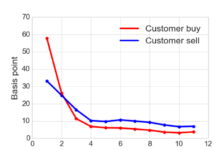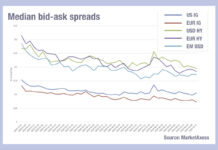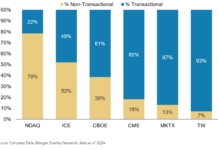Having had a challenging and volatile first half of the year from a liquidity perspective, not least because of a crisis in US and European banking, the Fixed Income Leaders Summit in Nashville heard how credit and US Treasury markets had held up, and even thrived.
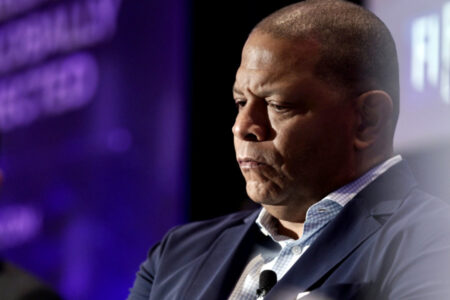
“I think volatility is definitely the friend of the trading desk,” said Dwayne Middleton, global head of fixed income trading at T Rowe Price. “That means we’re trying to be proactive and predictive in the markets and communicating that back into the investment process. It forces you to be more proactive versus reactive in the marketplace.”
Historically, volatility had driven firms to use voice trading over electronic trading, but the conference saw a shift in attitudes on the buy-side to voice trading.
Dan Veiner, co-head of global trading at BlackRock noted that “What we really mean by voice is non-comp bilateral.” Electronic trading has supported new ways to find liquidity when markets have struggled, delegates heard. Even in crises situations, getting creative in the way a buy-side firm can trade out of positions through a combination of electronic protocols including portfolio trading, can really help firms to manage the management of portfolios.
Ryan Raymond, head of US trading at Legal and General, noted that in the height of the UK Gilt crisis in 2022, this approach really helped.
“We were able to see US$2 billion of liquidity at the worst times of the UK gilt crisis quoted to us at bid plus one basis point,” he said. He noted that technology was a very important part of the way dealers can support liquidity provision, in addition to voice trading. For the buy-side, automation was also ging to become increasingly important on the trading desk.
“It starts with data; that ensures that we’re automating things in the right way, he said. “It’s absolutely essential to the growth of the business, it’s essential for efficiency, and it’s just something that we’re all going to have to get better at over the next few years.” Other aspects of market evolution that are helping firm to navigate choppy markets are found in the engagement with instruments other than cash bonds.
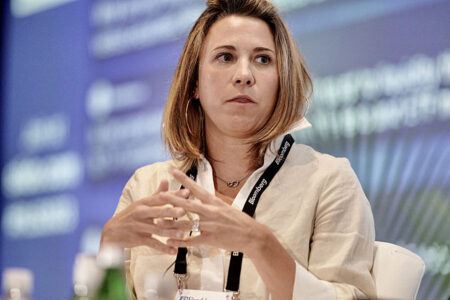
“While volatility is the friend of the trading desk, it’s also the friend of the exchange traded fund (ETF),” said Meredith Shaw, fixed income ETF product manager at Morgan Stanley. “We saw ETFs shone in the crisis. We see ETFs as relatively constant price discovery vehicles. In a risk off situation the ETF percentage of the TRACE volume increases significantly. Over a 20-day average, in March this year, high yield ETFs were about 45%, and prior to March that number had been about 30%. you saw a similar story in investment grade (IG), the TRACE percentage was 13% up until March and then went on to almost 20%.”
Futures are also seeing increased volume – Treasury futures volume is typically 5% larger than the underlying cash volume market this year – but activity is clearly impacted by market activity indicating that non-cash bond fixed income products are supporting the market as vol spikes, according to Ted Carey, senior director, for rates and OTC products at CME Group.
He said, “When markets are most active, when intraday price volatility is highest US Treasury futures volume actually tilts even more towards futures.”
The DESK
©Markets Media Europe 2023


